NEWS
School Web Filter: Benefits and Limitations
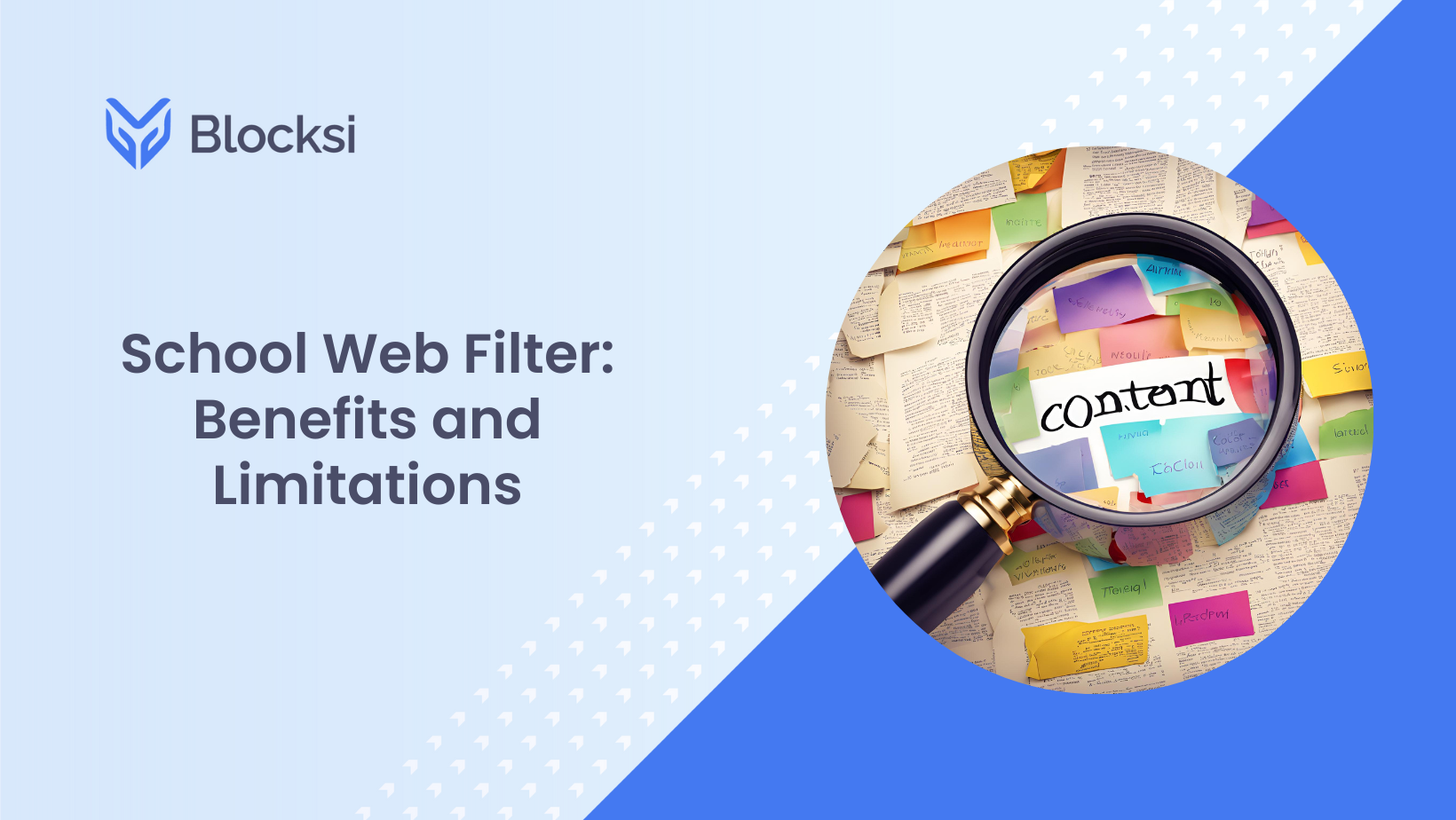
The internet has become a crucial component of our daily lives, and education is no exception. Providing a secure and productive online environment for K-12 students has become a primary responsibility for teachers, tech directors, and administrators as students have turned more and more to the internet for learning and research. Especially when technology is becoming more integrated into everyday classroom work, with 1:1 school districts – each student using their own device to assist them in reaching their full learning potential.
One solution to address this challenge is implementing web filtering for schools. Using school web filters or content filters, you can set up policies that allow you to block access to specific websites, monitor student screen time in class, and look for any security risks. These features have their restrictions and difficulties, even though they are unquestionably advantageous. We will thoroughly examine the advantages and drawbacks of web filters for schools and the factors you should consider before putting them into place. This article will help you better understand how internet filtering can affect the educational environment, regardless of whether you work as a teacher, tech director, or administrator. It will also assist you in making decisions about their use in your school.
Benefit #1: Student Safety
Content filtering solutions are one of the best ways for maintaining student safety. Content filtering for schools allows for blocking harmful or otherwise inappropriate and unwanted content and protects students from accessing it. This can include sites that encourage hate or discrimination, feature sexual or violent content, or engage in criminal activity. By banning access to specific websites and content, schools can protect students when they are using school-provided devices and networks. And the protection is not limited to school hours and premises, as these solutions work on different operating systems and allow the parents also to take part in their children’s online safety.
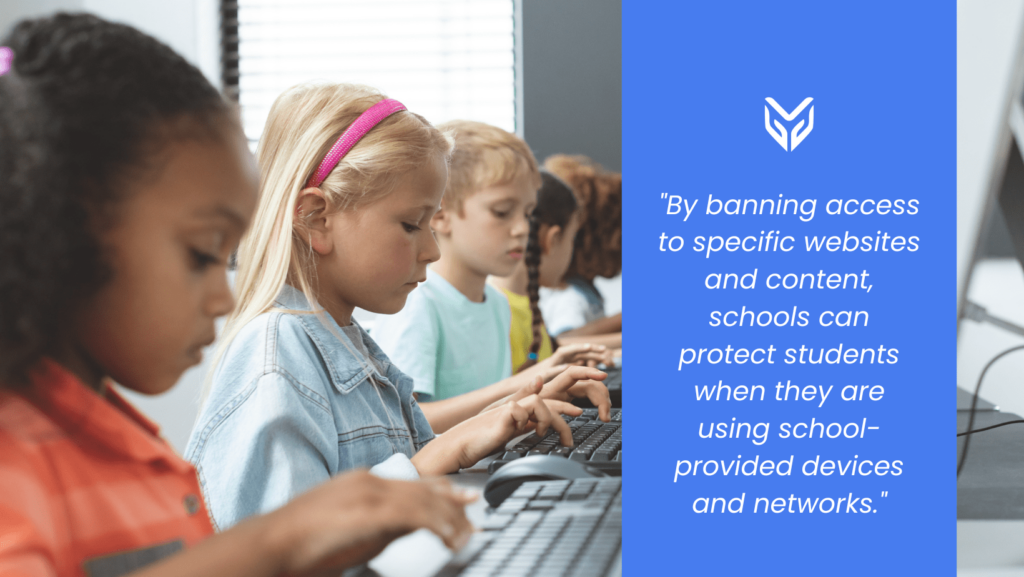
Limitation #1: Limiting Access to Valuable Educational Resources
Even though content filtering solutions are meant to shield kids from inappropriate or harmful content, they might restrict access to critical educational resources. If the content filtering solution is too strict, it can keep students from accessing material that is necessary for their learning and development.
This might be very challenging for students working on projects that call for access to specific websites or performing research, so policies must be put in place thoughtfully and suitably for an individual student’s age.
Benefit #2: Enhancing Student and Teacher Productivity
While using digital devices provides kids with a wealth of brand-new learning opportunities, the internet also offers a wealth of potential distractions. Content filtering can boost student productivity by restricting access to time-wasting websites and otherwise unwanted content. It helps maintain concentration and can assist students in making better use of their time and reducing interruptions.
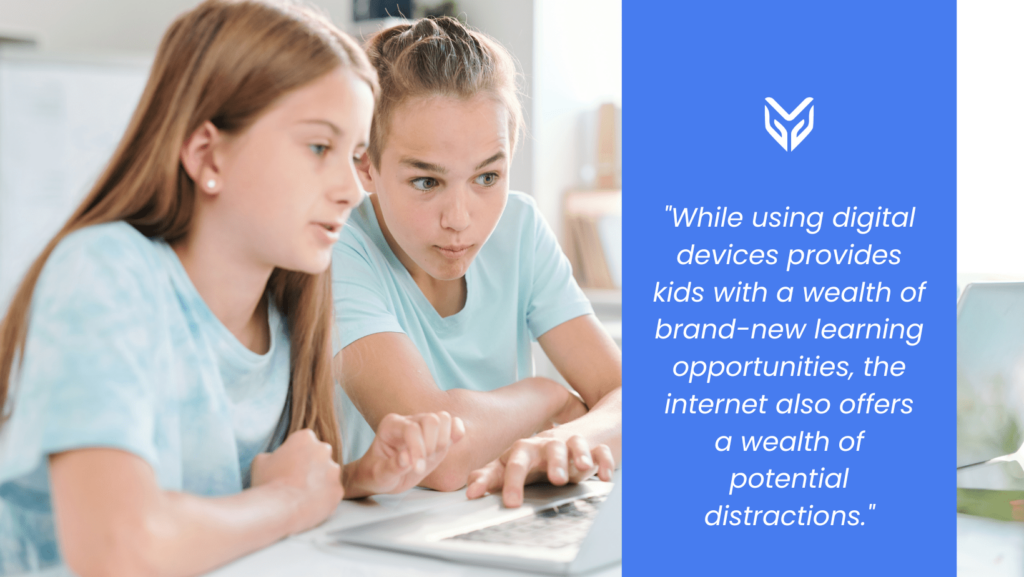
Limitation #2: Technical Difficulties
When implementing and maintaining content filtering solutions, specific technical difficulties might arise, especially in settings with limited resources and staff. The web filtering system may require schools to spend money on specialist hardware or software as well as staff training. Additionally, schools might have to deal with false positives or negatives when the web filter prevents access to an unsuitable site but allows access to one that is safe and appropriate.
But that can all be solved by choosing a proper school web filter solution that is easily deployable, cloud-based, brings next to no maintenance, is user-friendly, and makes it possible for every educator to use without unneeded hassle.
Benefit #3: Student and Data Protection
Maintaining students’ attention and, with it, increasing classroom productivity and better learning results is only one of the benefits of content filtering. Another is making sure they feel secure in their learning environment. So, besides shielding them from inappropriate content, school web filters also protect their privacy.
When every student has access to a school device, the risk of students encountering malicious malware, such as phishing scams, viruses, and spam, sadly resurges. And since students are more prone to become victims due to their digital inexperience and more cunning trickery, particular caution is needed. Because a student may unintentionally download dangerous software. Although the more basic content filters cannot prevent some of the more sophisticated tricks, they are excellent at blocking violent and hurtful content, such as cyberbullying, suicide threats, and harmful searches about gun violence and school bombings etc.
With a school web filter, you can also limit access to websites and platforms with a higher risk of cyberattack. This protects not only the students’ data but also the lifespan of school devices and the school network. And what’s more – some content filtering solutions come with location detection that helps districts locate missing devices based on their location or IP address, ensuring any lost devices are recovered.
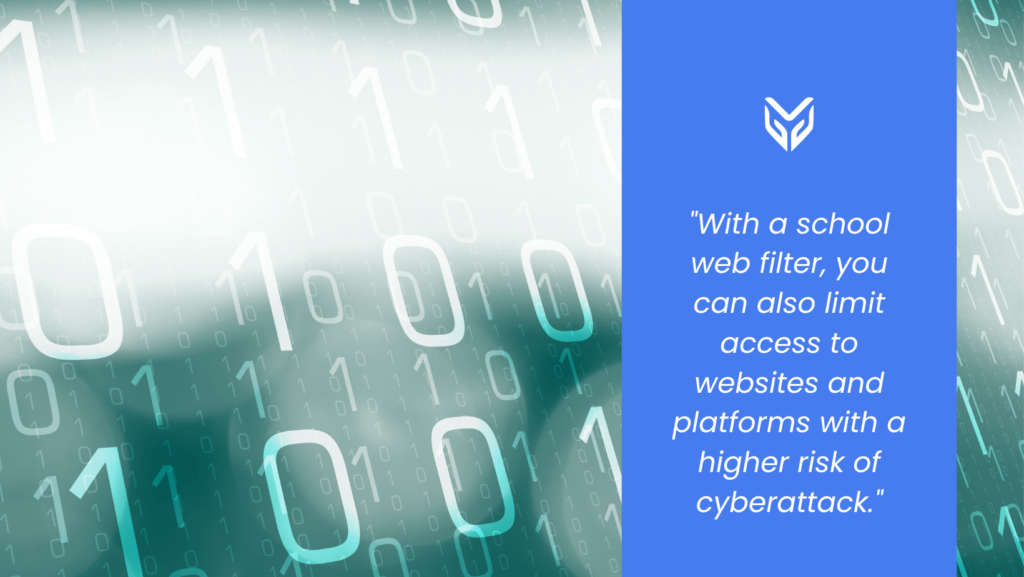
Limitation #3: The Fear of High Expenses
Web filters can be pricey to buy and maintain because schools must purchase a license or subscription to use them. For schools with limited funds, this may be a considerable expense. Although many software companies offer discounted prices for large purchases, at the end of the day, we must ask: can the safety of our young really be too expensive?
Benefit #4: A Classroom Screen Monitoring Software Enhancement
School web filters go excellently hand in hand with classroom screen monitoring solutions and make students’ online activities much safer and more easily overseeable by teachers. Of course, technology alone cannot provide the whole learning experience, but it is an essential tool for teachers to teach with additional support. Combining the safety web filters bring, and the countless opportunities for more efficient and interactive learning chances classroom screen monitoring solutions bring, the learning experience can achieve its fullest potential. Some classroom screen monitoring solutions even combine both by themselves, making the teaching experience more seamless.
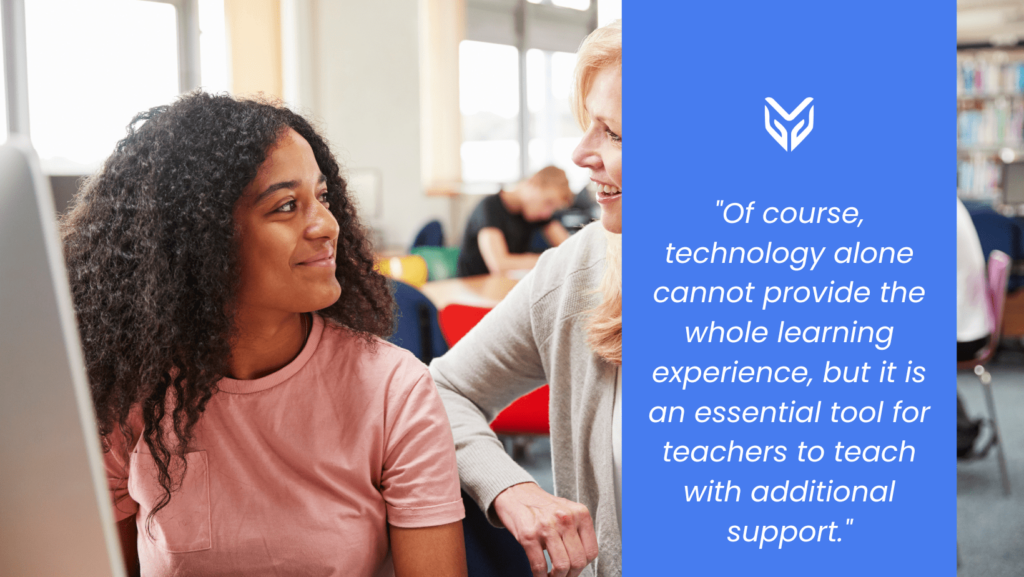
Limitation #4: Limited Effectiveness
Such web filtering is usually limited to school devices only, meaning students may still be at risk of exposure to inappropriate or harmful content. While using their own devices, they can, for example, access potentially inappropriate content on social media. Although if the students otherwise use web filtering in schools and practice digital wellness for most of the day, they will, in time, pick up on the good habits and become responsible web users on their own also.
So, Why Is Picking the Right School Web Filter Actually Crucial?
Web filters offer several key benefits for schools, making them an essential component of any school’s tech security plan. Not to mention the benefits it has directly on teachers and students. On one side, it provides the means of seamless teaching and, on the other, makes learning possible and safe.
Schools can improve student safety, stop students from accessing inappropriate content, and simplify network management responsibilities by using school web filters. And web filters also offer several additional advantages, such as increased student concentration and improved software for monitoring classroom screens. In conclusion, filters are a must for every school looking to safeguard students and enhance the learning environment. Think of the school web filter as an exceedingly productive and indispensable teacher’s assistant, and don’t hesitate to reach out to us and learn more about Blocksi’s solution.
SOURCES





